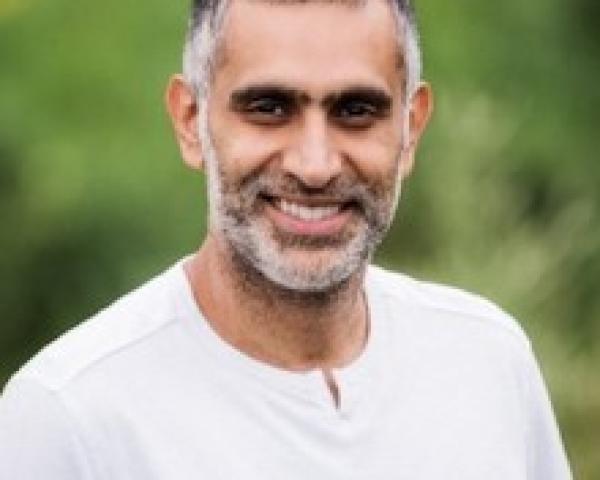The model of employer-sponsored healthcare has historically been very paternalistic. Companies would differentiate themselves and take care of their workforce with health plan offerings (and dental, if you were lucky!), employees would enroll in and use the plans they were offered, and it was very difficult for people to get the care they needed without an employer plan.
Things have changed
in the past 50 years, however. Insurance is no longer the differentiator it used to be. People have options in terms of where they get their coverage and the plan options they choose. Healthcare costs have risen exponentially, meaning cost considerations are more important than ever, both for employers and the employees they cover. Cost sharing is becoming more common through so-called consumer-driven health plans or high-deductible plans.
Because employers can no longer afford to cover everything for their employees, they shift costs to them and expect people to be smart about their healthcare spending.
But what happens when employees have to pay elevated premiums just to get the minimum of what they expect from their plans? Employees avoid care altogether.
Why? Because the tools to be smart, thrifty healthcare consumers just don’t exist.
Why Patients Are Bad Consumers
Consumers of just about everything else compare prices and quality to determine the best solution. Healthcare consumers
can’t do either of these things. Prices vary based on region, provider, potential complications and a variety of other factors, meaning that simply discovering the price of a particular treatment is difficult. Data on care quality is even harder to quantify, and the consumers who
do seek comparative outcomes find themselves among groups of doctors and providers still trying to get the same information. They don’t know what things cost or what they do, but we expect them to make educated decisions anyway.
Buying healthcare isn’t like buying anything else. Someone looking at healthcare options is likely ill, distracted and even scared. Not only is his health in jeopardy, but thanks to the prominence of high-deductible plans,
healthcare can cripple his financial life, as well.
See also: Consumer-Friendly Healthcare Model
Most healthcare consumers don’t even need all the options in front of them. The popular “80-20” rule of healthcare, an approximation that
20 percent of patients incur 80 percent of costs, exists because rarer and more complex ailments take more resources to cure. These consumers often don’t have the luxury of shopping around, so providers don’t have to cut them any breaks when the bills come due.
If healthcare consumers don’t know what they’re buying or how much it costs (and don’t feel like they have any say in the matter), are they actually consumers at all?
Subscriptions Are Popular for a Reason
Subscription services are picking up steam across the globe. People are outsourcing things like transportation to Uber, music to Spotify, shopping to Blue Apron — the list goes on, but healthcare has not yet taken advantage of the subscription model.
We need the same subscription-based outsourcing of responsibility in the healthcare space to push more of the complexity of the consumer process under the surface and provide patients with easily comparable options. Right now, people have to choose how they die (cancer insurance, accidental death and dismemberment insurance) and which parts of their bodies are covered (vision, dental, health). Not only does going broke seem to be a requirement for good treatment, but healthcare providers also aren’t doing enough to show patients what they’re paying for and what their options are.
Initiating the Change
The healthcare structure needs to move from consumer-driven to consumer-centric.
Navigating healthcare today is like producing a movie. Patients have to find the actors, directors and sets and then figure out the financing for everything separately without knowing what anything costs until the night of the premiere. Current healthcare transparency tools really only add another layer of confusion to the process because these tools communicate ineffectively.
Unfortunately, the “Uber of healthcare” doesn’t exist and likely won’t for the foreseeable future. Too many parties have too much at stake, and major companies like Apple and Tesla won’t enter this space because the barriers are too daunting. So, with the stakes so high and the options limited, what is the healthcare industry to do?
In short, be more helpful. We need to help people become healthier and protect their lives and their livelihoods, taking on the burden of information that has so far been placed at the feet of the unprepared consumer. Patients don’t care whether payment behind the scenes is coming from dental insurance or standard health insurance — they just want the bill paid and the service performed. Uber and Netflix have created a generation of people accustomed to having half the decision made before the information ever reaches them, and that’s what healthcare must become for the sake of its consumers.
See also: Healthcare: Time for Independence
The industry must take these steps to simplify the healthcare consumer experience:
- Drive relevance. People won’t watch videos about how healthcare works because they don’t trust the processes behind the industry as a whole. They’re more likely to watch videos — or download PDFs, listen to podcasts and otherwise consume content — about the benefits they’re receiving. That’s what affects them. We also need to put those benefits in context, comparing them with other plans both in the U.S. and abroad, and make that information engaging and digestible.
- Package for impact. People want to make their own benefits decisions, but the process is complicated and confusing. Netflix offers choice without overwhelming its users, by incorporating data to automate the early part of the search (the hardest part) and allow consumers to select from a range of prescreened options. As an industry, we must simplify the user experience by leveraging intuitive technology to create holistic benefits packages that are easy to understand.
- Prioritize everyday value. Right now, many healthcare options only step in when patients get hurt or seriously ill. We need to incorporate technology to make maintenance easier. Telemedicine and concierge services can eliminate many of the unnecessary barriers between consumers and care without breaking the bank.
- Create intuitive interfaces. People expect real-time feedback, iterative updates and responsive mobile experiences, yet the industry today largely lacks these things. Providers and insurers should shed the paper-based status quo and bring the simplicity of the 21st century into healthcare with customizable apps.
- Offer easy payments. Part of the appeal of subscriptions like Uber and Netflix is not having to pull out the credit card with every use. Healthcare needs to combine payroll deductions, copays, deductibles and co-insurance in a simple, single-payment system so people know when and where their money goes.
- Open the data. The data to help families become more educated and live healthier lives is out there — but it’s siloed. Data exchanges can incorporate products that address multiple facets of health and wellness, streamlining existing data to create not only savvier healthcare consumers, but also healthier, wealthier families.
It’s time for the healthcare industry to make life easier on the patients it serves. By taking on more of the information burden and improving communications, healthcare insurers and providers can give patients clearer options and easier access to the care they need.







